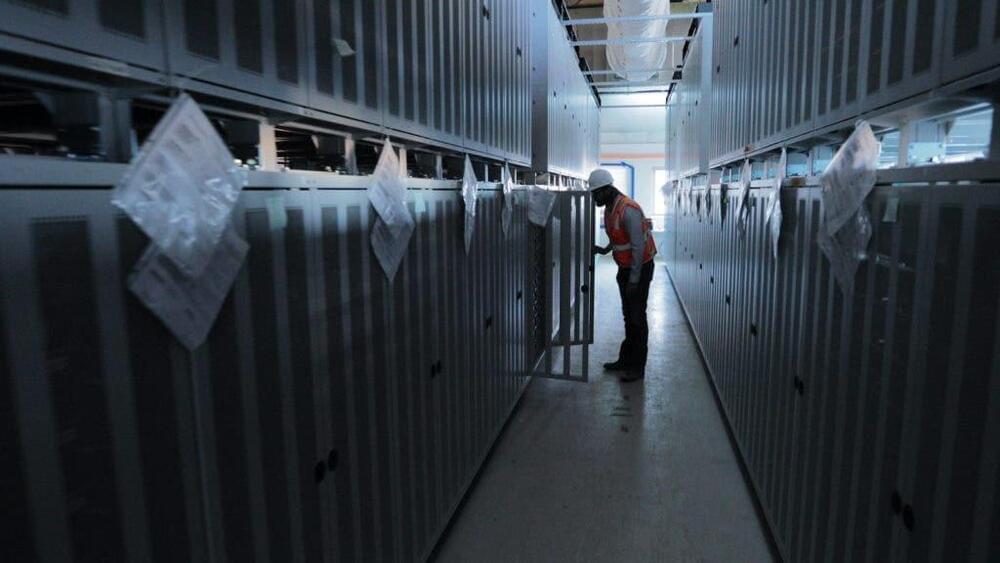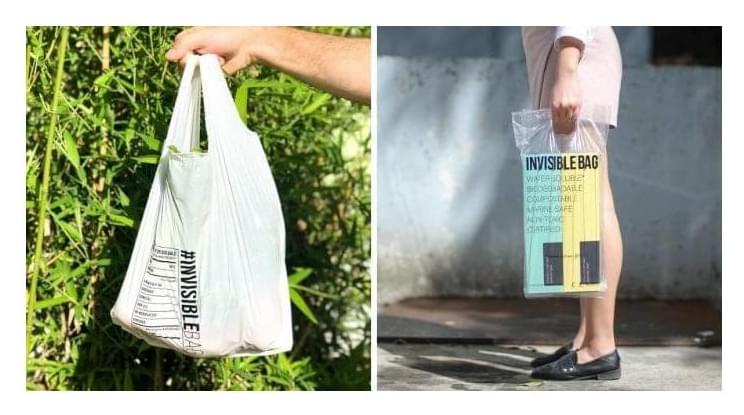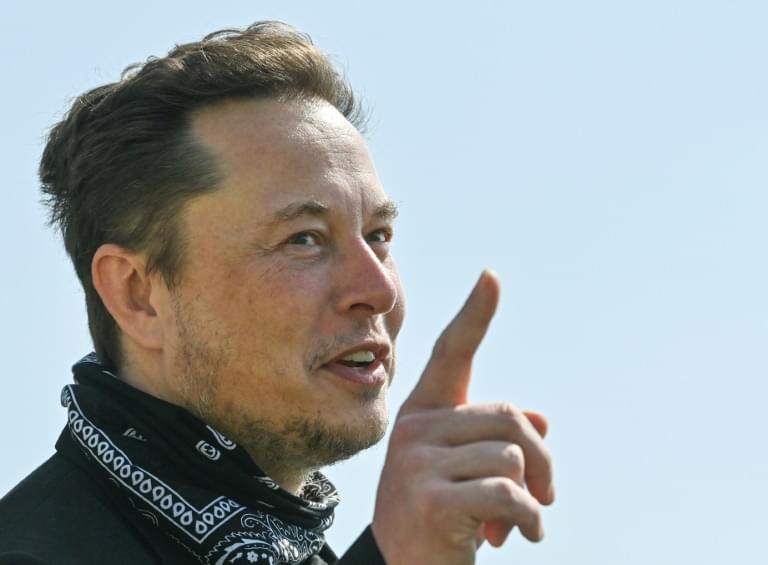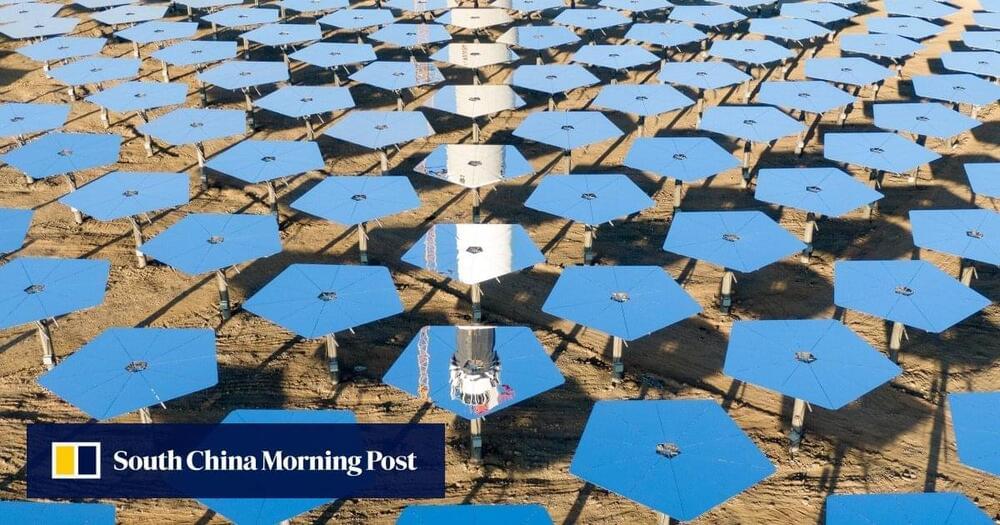Electrification is slower in coming to naval design, but CentrostileDesign is already imagining the luxury boat of tomorrow. It is fully electric, incredibly fast, completely sustainable and very dramatic.
Category: sustainability – Page 436

Giant Energy Storage Project Hoovers Up Excess Wind & Solar
What was that again about wind and solar power being unreliable? Some energy pundits are still tossing that old ball around, but meanwhile savvy investors are plowing billions into new energy storage facilities that spit out clean kilowatts on demand. Like they say, money talks, and in a fitting twist the latest example comes from the Golden State, California.
Massive New Energy Storage Facility For The Golden State
California has plenty of both wind and solar, and it also has an ambitious renewable energy goal, which makes it the perfect spot to launch ambitious clean power projects such as massive new energy storage facilities.
Starbase Live Plex — SpaceX Starship Launch Facility
SUNDAY 08/22/2021 Welcome to the LabPadre 24/7 Livestream! || Onsite weather provided by INITWeather.com || BOCA CHICA NEWS: NEW Heat tile replacement continues. B3 scrapping on hold. Catch arm fabrication proceeding. New Raptors arrive at shipyard GSE tank lifted into orbital tank farm. || ROAD CLOSURES: Intermittent Aug 23rd 9:30–11:30a CDT (1430−1630 UTC) and Aug 24th 5p-11p CDT (2200−0400 UTC), also Aug 25th, 26th. || LAUNCHES: Starsem, Soyuz 2.1b/Fregat, OneWeb #9 satellite constellation launched and deployed succesfully. Next: Blue Origin/New Shepard-NS 17 Wed Aug 25 2021 at 9:35a EDT, (13:35 UTC) from Launch Site One, West Texas, Texas, USA
Thank you for watching LabPadre’s live stream from Boca Chica and South Padre Island in Texas. Subscribe for more SpaceX live coverage.
Special thanks to Greg Scott and Gator’s Dockside in Port Canaveral, Florida.
https://twitter.com/GregScott_photo.
https://www.scottphotomedia.com.
Live Nerdle Cam Link: https://youtu.be/sTA0GTgFn5E
Live Lab Cam Link: https://youtu.be/edBUxf4Lv7Y
Live Sapphire Cam Link: https://youtu.be/FLTncjUbQtI
Live Predator Cam Link: https://youtu.be/Nqt-Bxakoko.
Live Sentinel Cam Link: https://youtu.be/_og17JYSMcQ
Live Starbase Rover Cam Link: https://youtu.be/w_pjKEIozdk.
Live Port Canaveral Cam Link: https://youtu.be/BELcufzEOZ0
Live Raptor Roost Cam Link: https://youtu.be/62_WX_YWooA
Live Plex Stream Link: https://youtu.be/sMC5KonXCfg.
Live SPI Pearl Beach Cam https://youtu.be/S09IablLc7Q
Onsite Weather — http://weather.labpadre.com.
Boca Chica Operations — http://www.cameroncounty.us/space-x/
FAA Notices To Airmen — https://tfr.faa.gov/tfr2/list.html.
This 24/7 stream is powered by LabPadre, in cooperation with Sapphire Condominiums and Isla Grand Beach Resort.
Video Graphics Overlay By: https://twitter.com/AeroJamesC
All copyrights to live images are owned explicitly by LabPadre.
Intelligent chat community!
Chat Rules:
No self promotion, No Bickering, No Vulgarity, No Politics, No Religion Talk, No Trash Talking, No Flat Earth Talk, NO Anti NASA/SpaceX Talk.
To help improve the LabPadre YouTube Channel you may donate to PayPal Family & Friends: paypal.me/labpadre.
Venmo: @LabPadre.
CashApp: $LabPadre.
GIS Map link: https://www.google.com/maps/d/viewer?mid=1wvgFIPuOmI8da9EIB8…55696&z=16
Rimac Nevera Faces Tesla Model S Plaid In Hi-Powered EV Showdown
The Nevera packs four electric motors that send 1,914 horsepower (1,408 kilowatts) to all four wheels. The car is also wearing Michelin Pilot Sport 4S tires while tipping the scales at 4,733 pounds (2,146 kilograms). It has an MSRP of $2.4 million. The Tesla Model S is far less powerful and cheaper, but it still impresses with its 1,020 hp (760 kW) output, thanks to its three-motor setup. It’s heavier than the Rimac at 4,833 lbs (2,192 kg), though it’s much cheaper at $124,000. Power routes to all four Michelin Pilot Sport 4S tires.
Watch as the Tesla Model S Plaid faces off against the Rimac Nevera hypercar in a series of high-powered EV drag races.

Hong Kong Startup Launches Plastic Bag that Dissolves in Hot Water
A Hong Kong start-up company has launched an eco-friendly plastic bag dubbed “Invisible Bag” which can easily dissolve in hot water (above 80 degrees Celsius). More importantly, its ingredients are non-toxic and will not cause harm to the environment.
It started by Devana Ng and her French husband Flavien Chaussegros, who are passionate about trail running. Last year, they saw the mountains full of plastic waste and decided to do their part for the planet by reducing the amount of waste. They founded Distinctive Action to promote sustainable and environmentally friendly products. The Invisible Bag is made of Polyvinyl Alcohol (known as PVA) together with plant-based starch, glycerin and water.
After soaking in water for a few minutes, the Invisible Bag will dissolve in hot water, which will turn milky white. However, it is environmentally safe, non-toxic, biodegradable, and leaves no microplastics behind, according to the Distinctive Action’s official website.
Sakuu’s 3D printed solid state battery could be a boon for electric vehicles
How true Eric Klien?
Something to look forward to: Solid-state batteries are still nebulous outside of the lab. Still, automakers are scrambling to be the first in the race to build the first electric car to take advantage of the added energy density and better safety when compared to lithium-ion designs. To that end, they’re investing in companies like QuantumScape, Solid Power, and Sakuu to develop manufacturing techniques that either build on existing approaches or rely on new additive manufacturing technology.
Earlier this year, an MIT study revealed that lithium-ion battery costs have fallen by more than 97 percent since its commercial introduction almost 30 years ago. Not only that, but industry watchers are optimistic that by2025lithium-ion battery manufacturing capacity will have tripled while the price per kilowatt-hour is expected to dip below $100.
The dip has spurred automakers to get serious about making electric cars, but the fact of the matter is that price is only part of the equation of making it a better choice for consumers and the environment. The importance of safety cannot be overstated, as evidenced by GM’s recall last year for more than 68,000 Chevy Bolts. On that front, researchers are hard at work developing a new cathode coating that not only makes lithium-ion batteries safer but could also improve their energy density.
Elon Musk Unveils Tesla Bot a humanoid robot set to debut in 2022
On Thursday, Tesla CEO Elon Musk unveiled the Tesla Bot, which runs on the same AI used in Tesla’s autonomous vehicles. This surprise reveal was shared at the end of Tesla’s AI Day presentation. Musk revealed very few details about the humanoid robot besides the fact that it is 5″ 8′ and weighs 125 pounds.
The Tesla Bot is to be built from lightweight materials, and its head will be fitted with the autopilot cameras used by Tesla’s vehicles for sensing the environment. The Bot will be operated by Tesla’s Full Self-Driving (FSD) computer.
As Tesla focuses on Artificial Intelligence (AI) upgrades for its electric vehicles, there has also been a focus on the Dojo supercomputer, which is intended to help train the EVs to navigate the streets without human assistance. Musk said that it only made sense to make the robot into a humanoid form and that it is intended to be friendly and help navigate through a world built for humans.
SpaceX Starship & Super Heavy Orbital Timeline Update!
First 200 to join through the link get 20% off the annual Premium subscription! https://brilliant.org/WhatAboutIt/
Today we’ll talk Starship and Super Heavy timeline! How long until SpaceX lights the candle again? Heatshield, tank farm, prototype testing. What’s left to do, and can we make an educated guess as to how many more weeks? Yes, we can! Let’s find out!
RGV Aerial Photography — Become a Flight-Supporter!
https://www.patreon.com/RGVaerial.
Credit:
⭐SpaceX
⭐NASA
⭐RGV Aerial Photography on Twitter: @RGVaerialphotos.
⭐RGV Aerila Photography on YouTube: @RGV Aerial Photography.
⭐Mary on Twitter: @bocachicagal.
⭐LabPadre on Twitter: @Labpadre.
⭐LabPadre on YouTube: @LabPadre.
⭐https://www.nasaspaceflight.com.
⭐Nick Henning on Twitter: @NickHenning3D
⭐John Winkopp on Twitter: @John_Winkopp.
⭐Tijn M on Twitter: @m_tijn.
⭐Tony Bela on Twitter: @InfographicTony.
⭐ErcX on Twitter: @ErcXspace.
3D Daniel on Twitter: @3DDaniel1
⭐SpaceX 3D Creation Eccentric on Twitter: @Bl3D_Eccentric.
⭐SpaceX 3D Creation Eccentric on YouTube: @SpaceX 3D Creation Eccentric.
⭐Ocean Cam on Twitter: @obetraveller.
⭐Ocean Cam on YouTube: @Ocean Cam.
⭐Alex Svan on Twitter: @alexsvanart.
⭐Caspar Stanley on Twitter: @Caspar_Stanley.
⭐Neopork on Twitter: @Neopork85
⭐Corey on Twitter: @C_Bass3d.
Editing: Brian Klug.

Elon Musk says Tesla’s robot will make physical work a ‘choice’
Are you ready?
After dominating the electric vehicle market and throwing his hat into the billionaire space race, Tesla boss Elon Musk announced the latest frontier he’s aiming to conquer: humanoid robots.
The irascible entrepreneur said Thursday he would have an initial prototype of an androgynous “Tesla Bot” by next year.
Based on the same technology as the company’s semi-autonomous vehicles, the robot will be able to perform basic repetitive tasks with the aim of eliminating the need for people to handle dangerous or boring work, Musk said at an online event on Tesla’s advances in artificial intelligence (AI).

China to harvest sun’s energy in space and beam it to Earth for power by 2030
Over the last few decades, various forms of solar power stations have been proposed from around the world but they remained theoretical because of major technical challenges.
At Bishan, Chinese researchers would first need to prove that wireless power transfer worked over a long distance.
Civilian and military researchers will look at applications for the technology amid concerns about radiation and the potential for beams misfired from space.